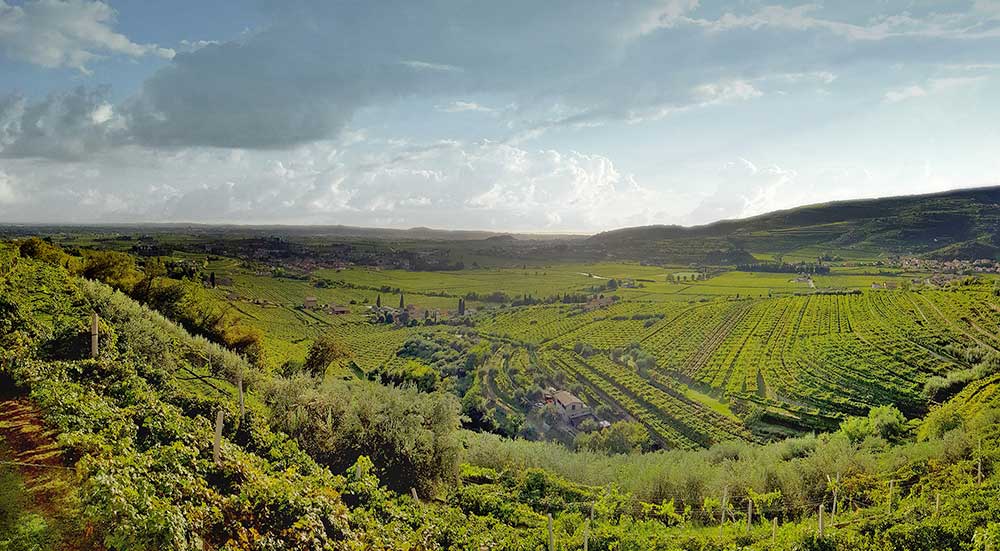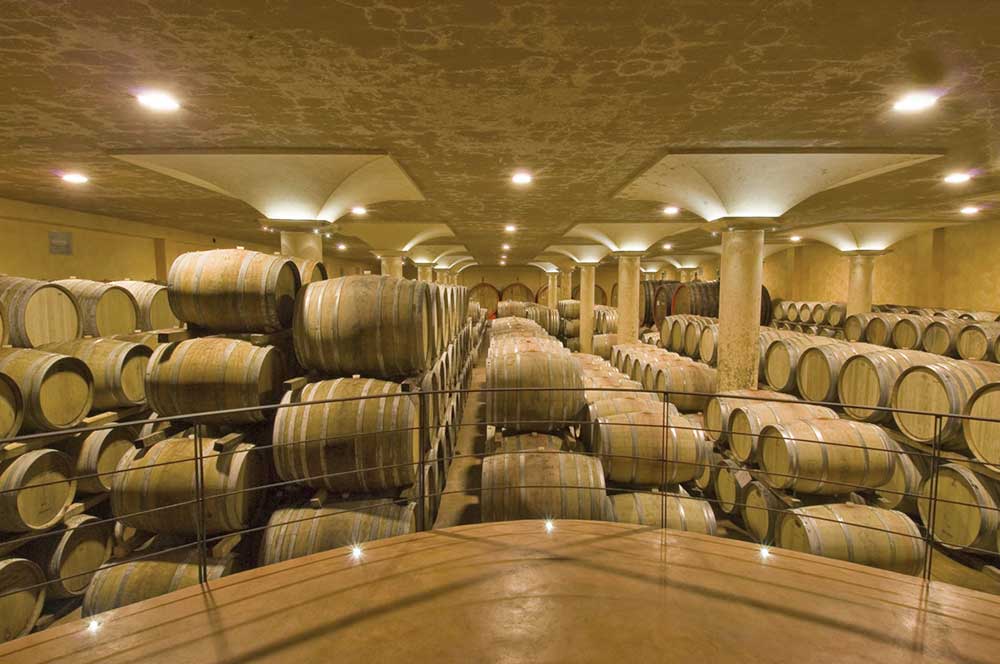Two very special reds - the perfect gifts or the perfect treat. Your choice.
Typical of European wine terms, Valpolicella refers to both the place and the wine. Located in the northeast of Italy, the area known as Valpolicella sits within the wider region of Veneto, the capital of which is Venice. Veneto is also home to Soave and Prosecco.

Speri was founded in 1874 and with members of both the 4th and 5th generations now at the helm, it’s one of the oldest family-run estates in the region.
Land is expensive here. These days, 2ha with two-year-old vines, in a good but not great part of Valpoicella, will set you back about 1 million euro ($1.5M AUD).
The huge advantage that an impeccably positioned 60ha estate like Speri’s, enjoys over its competitors is obvious. Established vineyards of this size rarely, if ever, become available, and if they did, you’d have to think it would be hard to match the wine prices Speri is able to offer.
Historically the region was in an area northwest of Verona, but when it achieved DOC status in 1968, the boundaries were significantly expanded. The original area, considered to possess better vineyard sites and produce better quality wines, became known as the Classico zone. All of Speri’s 60ha of vineyards, spanning over five sites, are located within the Classico zone.
Of the many varieties grown in Valpolicella, the 3 you need to know are CorvinaVeronese, Rondinella and Molinara. They’re used to produce several wines of different styles, the most prestigious of which is Amarone, a heroic red wine that’s incredibly rich, powerful and alcoholic.
Amarone, or Amarome della Valpocliace (as it’s officially known), earned DOCG status (Italy’s top wine appellation) in 2009. It’s made by drying the grapes, concentrating the sugar, and while the resulting wine is fermented to dryness, the illusion of sweetness remains. An amazing 40% of the grapes’ weight is lost during drying and this, coupled with the incredibly labour intensive nature of the process, explains why Amarone is also expensive. Considering what you’re getting though, I’d argue it’s still possible to find good value.
 Speri Amarone della Valpolicella DOCG Vigneto Monte Sant’Urbano 2012
Speri Amarone della Valpolicella DOCG Vigneto Monte Sant’Urbano 2012
Of the Speri’s five vineyard sites, its best is the 19ha it holds on the famous Monte Sant’Urbano. This magic peak sits in the the middle of the Classico zone at between 280-350 meters elevation and has long been considered one of the best sites in Valpolicella. The Speris have kept the traditional 10 foot drywall terraces, known as “marogne” with the vines trained on pergolas. They obtained organic certification for all their vineyards in 2015.
In only the best years, Speri makes a single vineyard Amarone from this special, elevated site, the result being the estate’s top wine. The blend is 70% Corvina, 25% Rondinella and 5% Corvinone.
Grapes are handpicked, with only best bunches selected and dried for 3-4 months on traditional wooden racks. With the potential for rot to ruin everything, the high risk of this process amazes me. But when everything goes right, the results are incredible. After drying, the grapes are macerated in stainless steel tanks for 36 days before fermentation in 500L oak barrels. The wine then spends 2 years ageing in French oak, another year in Slovenian oak, then another year after that in bottle before its release.
Within Italy, the Speri Vigna Sant’Urbano is one of the most awarded wines, along with Ornellaia, Sassicaia, San Leonardo and a few other iconic Italian wines. This vintage is no exception, with the wine receiving a slew of awards from Italian critics:
And from international ones:
“This complex and fragrant wine opens with dried violet, black plum and cooking spice aromas. The smooth, well-structured palate doles out blackberry jam, pipe tobacco, ripe black cherry, nutmeg and licorice flavors. Velvety tannins provide elegant support. Drink through 2027.” Wine Enthusiast, 94/100.
“Dark ruby with a pale rim. Penetrating red cherry, cinnamon, minerals and botanical herbs on the perfumed, captivating nose; this has a strong aromatic quality that I rarely find in Amarone. Then slightly more austere in the mouth, with strong herbal elements adding a savory component to the ripe but vibrant red fruit flavors. Finishes long with a firm tannic spine, young, chewy tannins,and hints of gunflint. A knockout Amarone and one of the early candidates for wine of the vintage in the difficult2012 vintage.” 93 points, Ian D’Agata, Vinous by Galloni.
“Speri’s Amarone is a thrilling version of the king of Veronese wines, characterised by the deepest black colour, an intense bouquet with spicy, aromatic and jammy notes and a powerful palate with measured finesse.” Michael Trembarth (Melbourne based Italian wine expert).
Rich, concentrated and powerful, yet strange as it may sound, this wine is almost medium-bodied and elegant by Amarone standards. Velvety and smooth, this is a wine that’s hard not to like… a lot. Absolutely beautiful.
I can offer it for $135 a bottle. SOLD OUT
Last week the results of the highly anticipated annual Wine Spectator Top 100 were finally announced. I always enjoy having a peek at the top 10, many of which unfortunately don’t make it to Australian shores. But this year I was pleased to see a familiar name, in the form of Casanova di Neri Brunello di Montalcino 2012, coming in at No.4. Just getting into the Top 100 is a massive achievement, so to be No.4 is a stunning result.
“Casanova di Neri is one of the shining stars of Montalcino. Each successive vintage released brings us renewed understanding of the focus and dedication demonstrated by the father and son team that operates this estate. The winemaking style is impeccable and elaborate.” The Wine Advocate.
Brunello di Montalcino, often referred to simply as Brunello, is one of Italy’s most prestigious and expensive wines. It’s a red wine originating from the vineyards around Montalcino, a stunning medieval hilltop town in Tuscany about 110km south of Florence.
“A great Brunello is a wine of incomparible refinement, power and ageworthiness.”Decanter Magazine, May 2014.

While wine has been made in this area for hundreds of years, it wasn’t until 1888 that it was bottled under the specific name Brunello di Montalcino. Brunello was recognised as a DOC (appellation) in 1966 and upgraded to one of the first five DOCGs, the highest level in the Italian wine classification system, in 1980.
The term Brunello was the name traditionally given to the grape variety grown around Montalcino. These days we know it to be a strain of Sangiovese, Italy’s most widely planted variety, and here it finds its richest, boldest and most famous expression.
Brunello is characterised by firm acidity and moderate to high tannin. The best examples have "luscious, bold, rich black and red fruit flavours."Wine Spectator Magazine. More specifically you’ll find flavours of blackberry, cherry, raspberry, chocolate aged balsamic and minerals - ageing to fig, sweet tobacco, espresso and leather. Oxford Companion to Wine notes; “Brunello is one of Italy's most noble and long-lived wines.” If stored well, it'll cellar for between 10-30 years.
DOCG requirements mean Brunello must be made from 100% Sangiovese, aged for a minimum of 2 years in oak and minimum of 4 months (6 for Riserva) in bottle. And it cannot be released until 5 years (6 years for Riserva) after the date of harvest. Sounds like a tough cash flow model. Interestingly, it can also only be sold in Bordeaux shaped bottles.
 Casanova di Neri Brunello di Montalcino 2012
Casanova di Neri Brunello di Montalcino 2012
Casanova di Neri was established in 1971 by Giovanni Neri and taken over by is son Giacomo in 1991. The estate now has around 63ha (155 acres) of vineyards, mostly located east of the town of Montalcino. The estate makes several wines, including the famed ’Cerretalto’, (I have one bottle of the 2007 at $400 if you’re interested. 96 points Robert Parker & 97 points James Suckling).
Anyway, this wine, referred to as their ‘white label’ was first released in 1978. Wine Spectator says the white label “earns praise for its fruit and floral aromas and vibrant structure.” The wine is 100% Sangiovese with Giacomo describing it as “the expression of the most elegant Sangiovese of the estate.” The fruit is handpicked from four different parcels close to the winery and fermented using wild yeasts in temperature controlled cone-shaped fermenters. It sees 43 months ageing in large oak casks (3,600-8.600L) and a further 6 months in bottle.
“Effusive aromas and flavors of raspberry, cherry, floral, mineral and tobacco are at the center of this linear, vibrant red. Well-structured, this offers terrific length on the sinewy finish. Best from 2020 through 2035.” 95 points. Bruce Sanderson, Wine Spectator.
“The 2012 Brunello di Montalcino opens to thick layers of dark fruit, mocha, spice, leather, cigar box and pipe tobacco. A distant note of dried fruit or blackberry confit adds softness and sweetness. Give this wine a few more years to flesh out and integrate.” 93 points, Monica Larner, The Wine Advocate.
A stunning and dare I say, affordable example of Brunello.
I can offer it for $120 a bottle. SOLD OUT